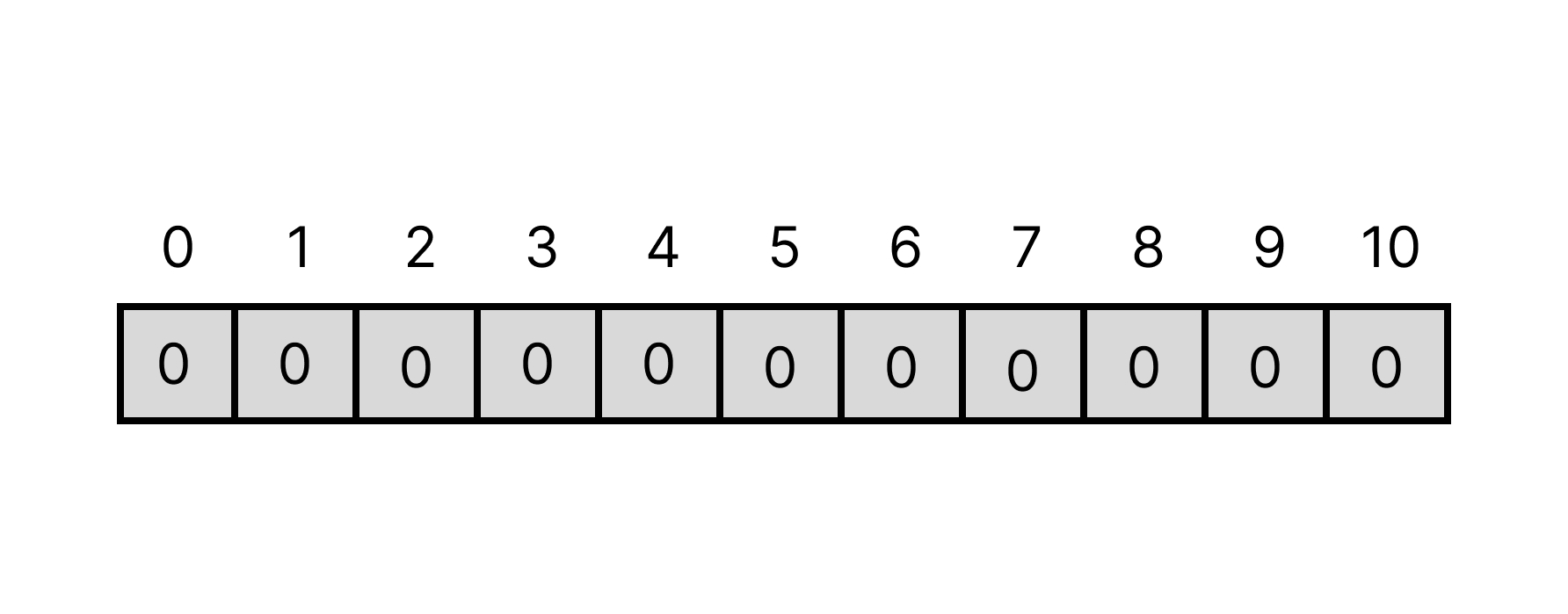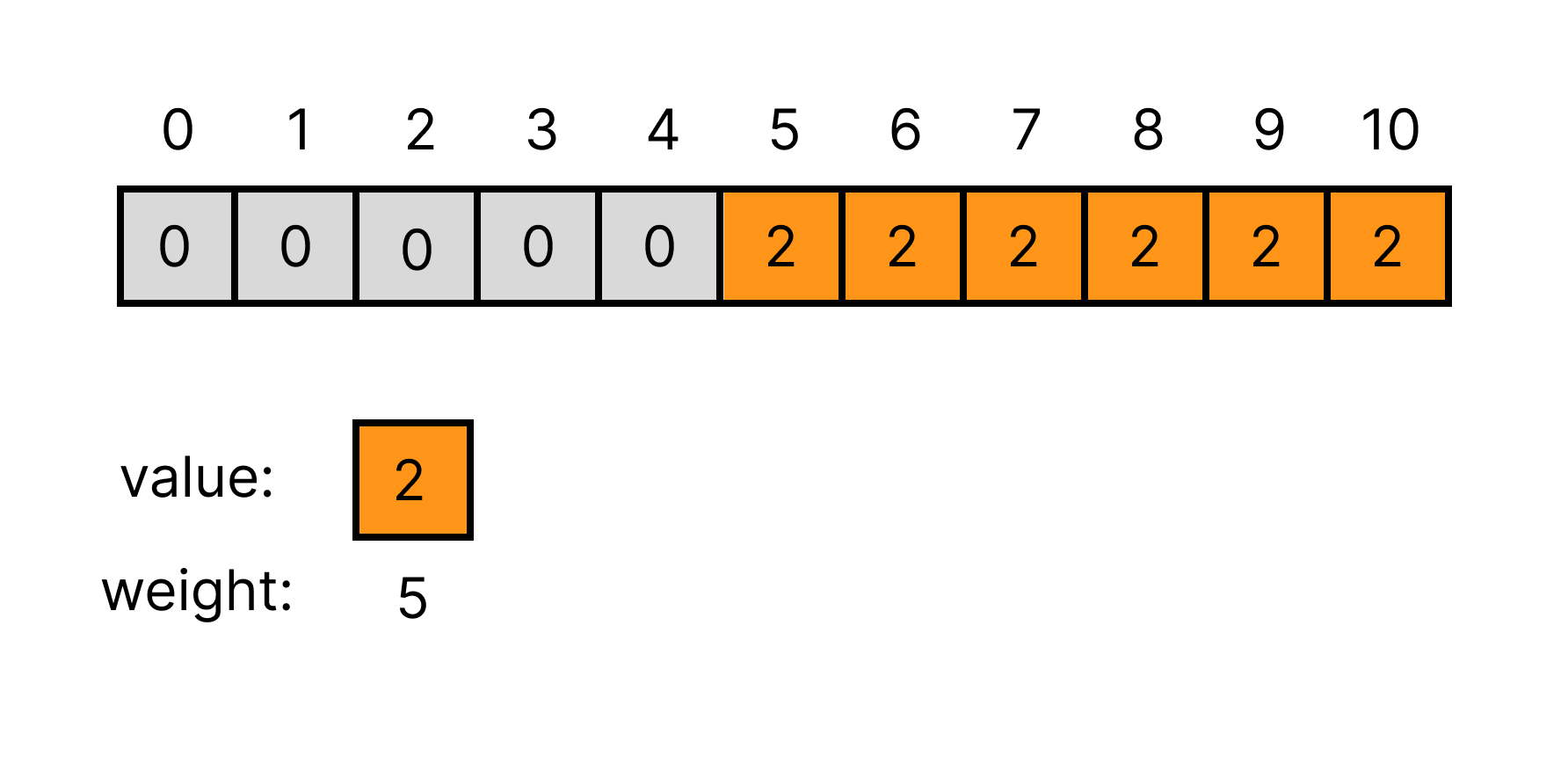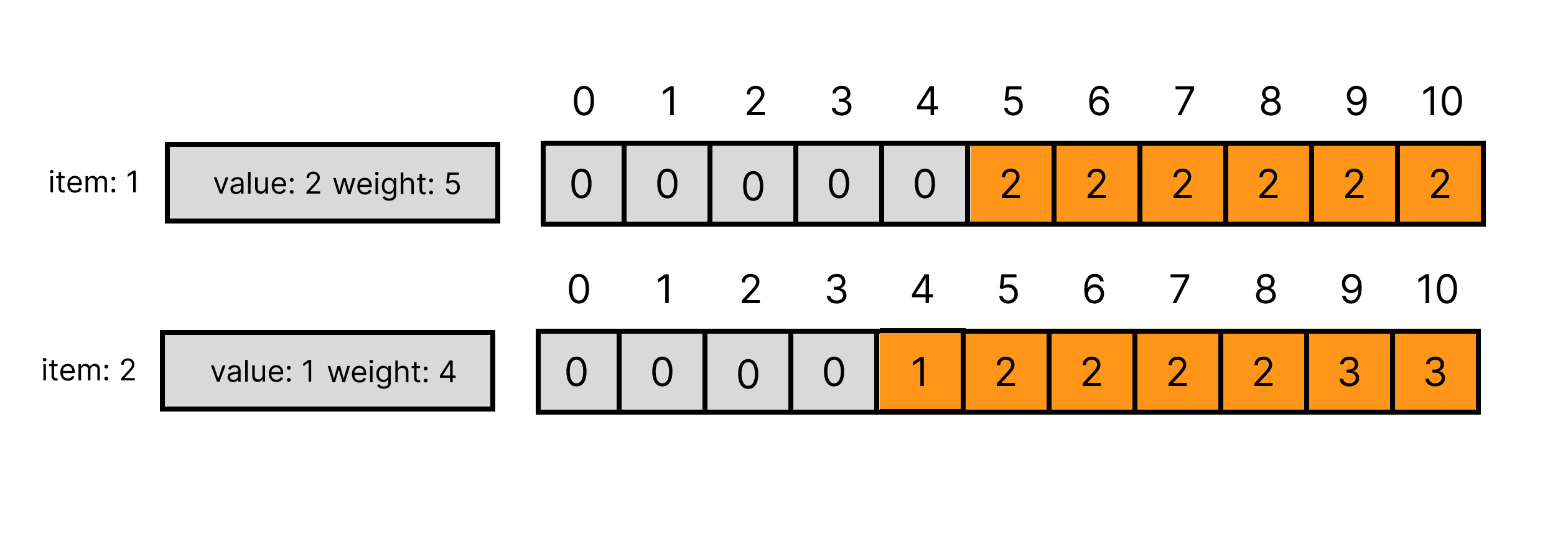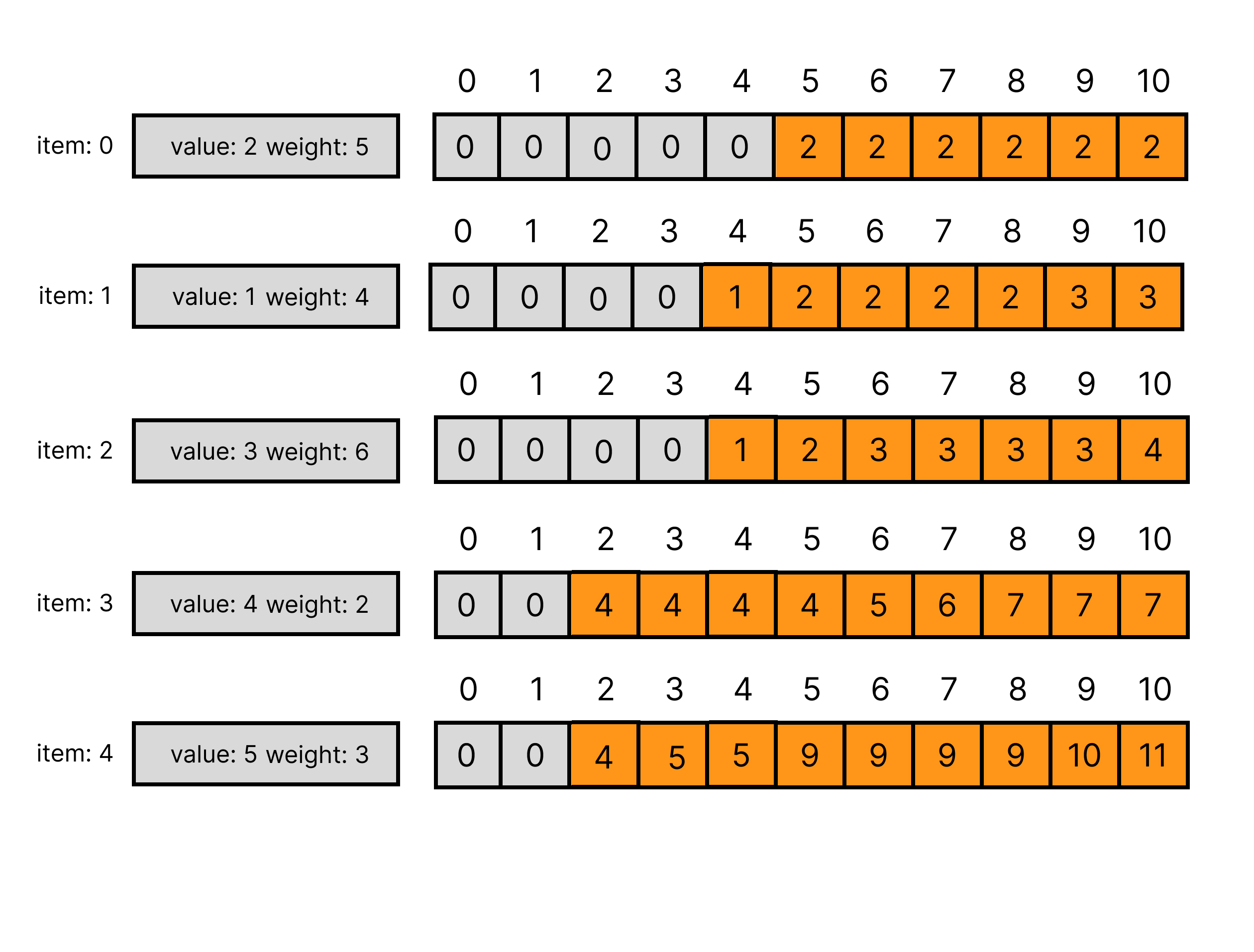Understanding the knapsack problem

I recently solved a leet code (maximum profit trading stocks) challenge that introduced me to a dynamic programming problem called knapsack.
The knapsack problem
The knapsack problem is an optimization challenge characterized by a knapsack with a limited capacity. In this scenario, you possess a set of items, each with a specific weight and value. The objective is to maximize the total value of the items you can accommodate in the knapsack without surpassing its weight capacity. The task involves determining the optimal combination of items to pack into the knapsack, aiming to achieve the highest overall value within the given weight limit.
We have 3 main variables:
- Weight
- Value
- Capacity
Lets give these values to make this more concrete
Weight = [5, 4, 6, 2, 3]
Values = [2, 1, 3, 4, 5]
Capacity = 10
We’ll go ahead and create an array of the length of ‘capacity’ + 1. Each index in the array represents a capacity.

We will loop through each item and fill each index with the maximum value for the capacity so far. The first item has a value of 2 and a weight of 5.

As you can see, for the first item with a weight of 5 we can only hold 2 when the minimum capacity is 5. Let’s go to the next item.
Since our goal is to determine the maximum value of all the items considered thus far within the given capacity, for the next item, we must compare two values. We compare the current value, which is 2. Considering the item’s weight is 4, we also assess if we can accommodate the maximum value of 6, given the capacity is 10. Since we can, we add those values together at index 10 (capacity of 10). Subsequently, at a capacity of 9, we evaluate the maximum value at 5, and so on.

The code so far would look something like this:
function knapsackBottomUp(weights, values, capacity){
let dp = new Array(capacity + 1).fill(0);
for (let i = 0; i < weights.length; i++) {
let value = values[i];
for (let j = capacity; j >= weights[i]; j--) {
dp[j] = Math.max(dp[j], dp[j - weights[i]] + value);
}
}
...
}
We will continue filling this out. As you can see, we are breaking down our problem into subproblems and populating the maximum values for each capacity limit. After iterating through each item, the resulting dp array would look something like this:

From here, we can simply return the value at the last index after completing the calculation of the array with the last item. Voila! The maximum value at a capacity of 10 is 11.
Here is the full code in JavaScript:
function knapsackBottomUp(weights, values, capacity){
let dp = new Array(capacity + 1).fill(0);
for (let i = 0; i < weights.length; i++){
let value = values[i];
for (let j = capacity; j >= weights[i]; j--) {
dp[j] = Math.max(dp[j], dp[j - weights[i]] + value);
}
}
return dp[capacity];
}
Please send me an email, if you see any issues or have any suggestions!
tristansetha@gmail.com